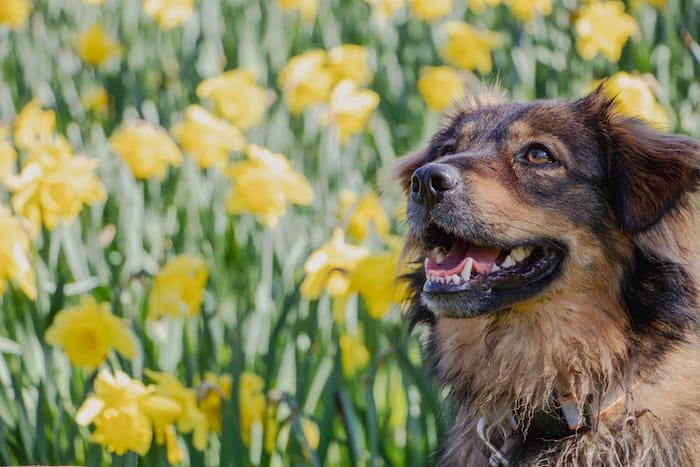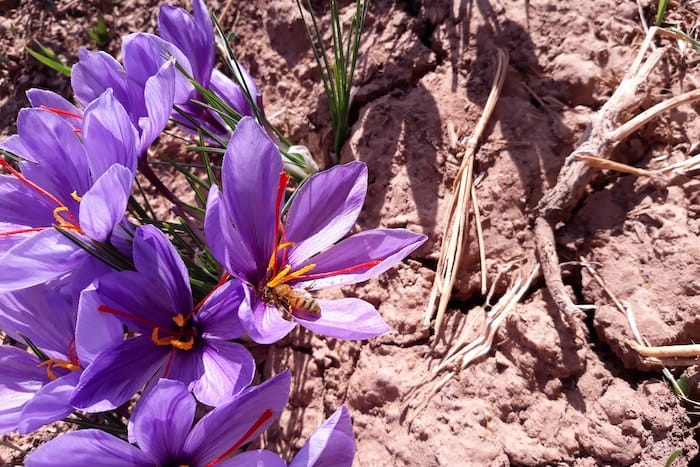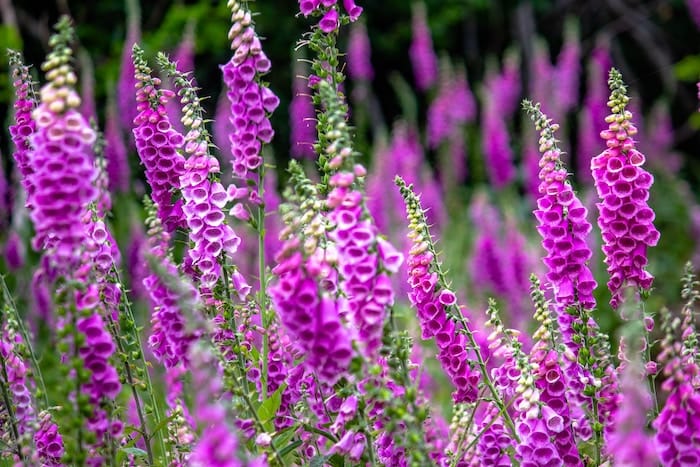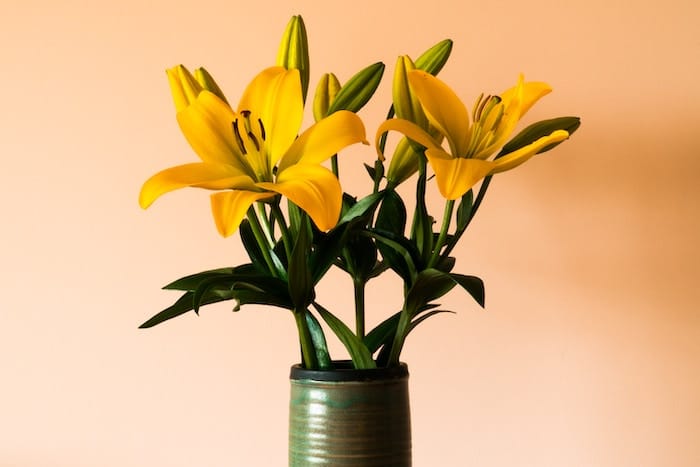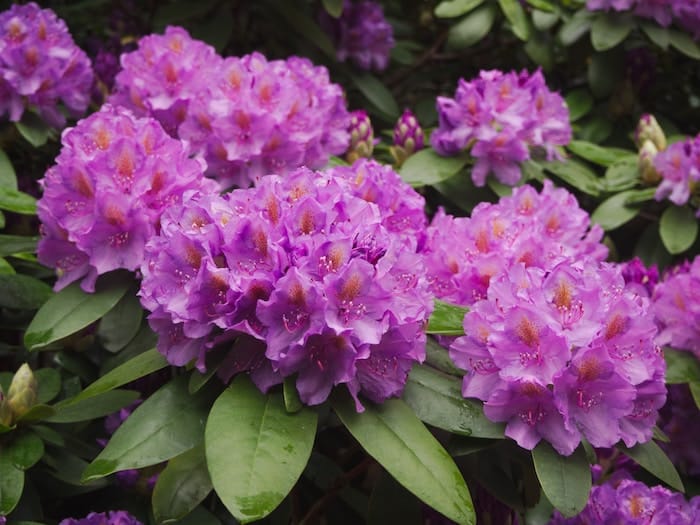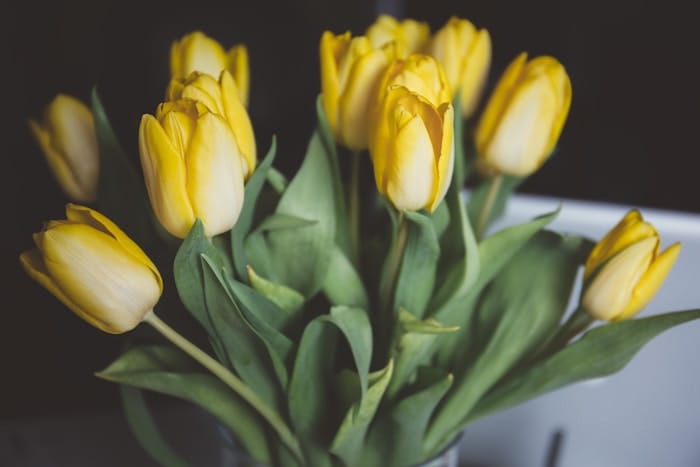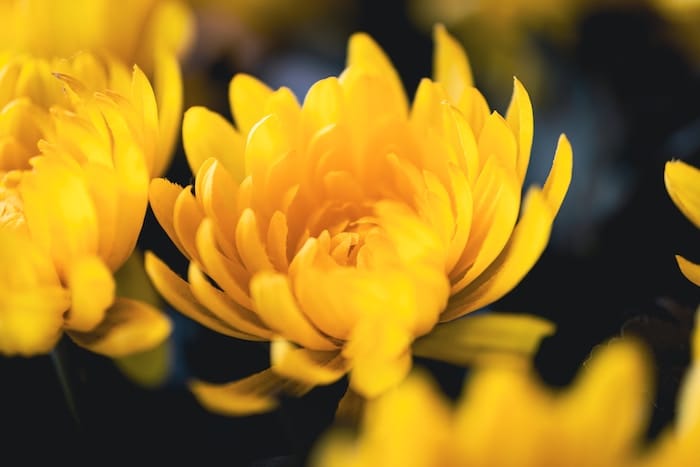As a dog owner, you’re always on the lookout for potential hazards to your furry friend’s health and well-being. While flowers might seem harmless, there are several common yet toxic flowers that can pose a serious threat to your dog’s safety.
In this post, we’ll explore 18 common flowers that every dog owner should be aware of to keep their beloved pets safe.
Azalea (Rhododendron spp.)
Azaleas, part of the Rhododendron genus, are popular garden plants known for their vibrant colors and lush blooms, and often form part of bouquets of delivered flowers. However, they contain grayanotoxins, which can cause vomiting, diarrhea, weakness, and even cardiac failure in dogs if ingested.
Keep your dog away from azaleas and monitor them closely if you suspect they’ve consumed any part of the plant.
Autumn Crocus (Colchicum autumnale)
Autumn crocus, also known as meadow saffron, is a beautiful flower that blooms in fall. Despite its beauty, it contains colchicine, a toxic substance that can cause severe vomiting, diarrhea, and even organ damage or death in dogs.
Be cautious when planting autumn crocus in your garden or walking your dog in areas where it grows wild.
Daffodil (Narcissus spp.)
Daffodils are popular spring flowers, but they can be dangerous for dogs. The bulbs are the most toxic part, containing alkaloids that can cause vomiting, diarrhea, abdominal pain, and even heart problems.
Keep your dog away from daffodils and store bulbs safely out of reach when planting.
Foxglove (Digitalis purpurea)
Foxglove is an attractive flowering plant often found in gardens and wild areas. However, it contains cardiac glycosides, which can lead to heart problems, tremors, seizures, and even death in dogs if ingested.
Be cautious when planting foxglove in your garden and monitor your dog if they show signs of poisoning.
Hydrangea (Hydrangea macrophylla)
Hydrangeas are popular flowering shrubs that can be toxic to dogs. They contain cyanogenic glycosides, which can cause vomiting, diarrhea, lethargy, and, in severe cases, difficulty breathing and coma.
If you suspect your dog has consumed any part of a hydrangea plant, seek veterinary care immediately.
Iris (Iris spp.)
Iris plants, with their striking blooms, are a common sight in gardens. Unfortunately, they can be dangerous for dogs. The rhizomes, or underground stems, contain toxic compounds that can cause vomiting, drooling, and diarrhea.
Keep your dog away from iris plants and store rhizomes securely when planting.
Lilies (Lilium spp.)
While not all lilies are toxic to dogs, some species, such as the Easter lily, tiger lily, and daylily, can cause kidney failure if ingested.
Symptoms include vomiting, diarrhea, loss of appetite, and increased urination. If you suspect your dog has consumed any part of a lily plant, seek veterinary care immediately.
Lily Of The Valley (Convallaria majalis)
Lily of the valley is a small, fragrant flower that contains cardiac glycosides, making it highly toxic to dogs.
Ingestion can lead to vomiting, diarrhea, irregular heartbeat, seizures, and even death. Keep your dog away from lily of the valley plants and be vigilant when walking in areas where they grow.
Oleander (Nerium oleander)
Oleander is an attractive flowering shrub that contains toxins that can be extremely dangerous for dogs. All parts of the plant contain cardiac glycosides, which can cause vomiting, diarrhea, irregular heartbeat, seizures, and even death. Be cautious when planting oleander in your garden and monitor your dog if they show signs of poisoning.
Rhododendron (Rhododendron spp.)
Rhododendrons are popular garden plants closely related to azaleas. Like azaleas, they contain grayanotoxins and are toxic to dogs.
Ingestion can lead to vomiting, diarrhea, weakness, and even cardiac failure. Keep your dog away from rhododendrons and seek veterinary care if you suspect they’ve consumed any part of the plant.
Sago Palm (Cycas revoluta)
Sago palms are commonly used as ornamental plants but can be highly toxic to dogs.
The seeds are the most dangerous part, containing a toxin called cycasin, which can cause vomiting, diarrhea, liver failure, and death. Keep your dog away from sago palms and store seeds securely out of reach.
Tulip (Tulipa spp.)
Tulips are popular spring flowers that can pose a risk to dogs. The bulbs are the most toxic part, containing compounds that can cause vomiting, diarrhea, and drooling. Keep your dog away from tulips and store bulbs safely out of reach when planting.
Wisteria (Wisteria spp.)
Wisteria is a beautiful, climbing plant with cascading flowers. Unfortunately, the seeds and pods contain a toxic compound called wisterin, which can cause vomiting, diarrhea, and abdominal pain in dogs if ingested.
Be cautious when planting wisteria in your garden and keep your dog away from the seeds and pods.
Yew (Taxus spp.)
Yew is a common evergreen shrub with red berries that can be extremely toxic to dogs. All parts of the plant, except the fleshy part of the berries, contain taxine alkaloids, which can cause rapid heart rate, muscle tremors, difficulty breathing, and death.
Keep your dog away from yew plants and seek veterinary care if you suspect they’ve consumed any part of the plant.
Chrysanthemum (Chrysanthemum spp.)
Chrysanthemums are popular ornamental flowers that contain pyrethrins, which can be toxic to dogs. Ingestion can cause vomiting, diarrhea, drooling, and incoordination. While the toxicity is generally mild, it’s essential to keep your dog away from chrysanthemums and seek veterinary care if they show signs of poisoning.
Amaryllis (Hippeastrum spp.)
Amaryllis is a popular bulbous plant known for its large, vibrant flowers. However, it can be toxic to dogs, as it contains alkaloids that can cause vomiting, diarrhea, loss of appetite, and tremors.
The bulbs are the most toxic part, so keep your dog away from amaryllis plants and store bulbs securely when planting.
Morning Glory (Ipomoea spp.)
Morning glories are beautiful, fast-growing vines with trumpet-shaped flowers. While they can add a splash of color to your garden, they also contain toxic compounds called indole alkaloids that can be harmful to dogs.
Ingestion may cause vomiting, diarrhea, disorientation, and, in severe cases, tremors and seizures. Be cautious when planting morning glories in your garden and keep your dog away from the seeds and plants.
Castor Bean (Ricinus communis)
Castor bean plants are known for their attractive foliage and spiky seed pods. However, they contain the highly toxic compound ricin, making them dangerous for dogs. Ingestion of the seeds can cause severe vomiting, diarrhea, abdominal pain, seizures, and even death. If you suspect your dog has consumed any part of a castor bean plant, seek veterinary care immediately.
Conclusion
As a dog owner, it’s crucial to be aware of the potential dangers posed by common flowers in your garden or surrounding areas. By familiarizing yourself with these eighteen toxic flowers, you can take steps to keep your dog safe and prevent accidental poisoning. Always monitor your dog closely in outdoor spaces and seek veterinary care if you suspect they’ve ingested any part of a toxic plant.
Related Reading

